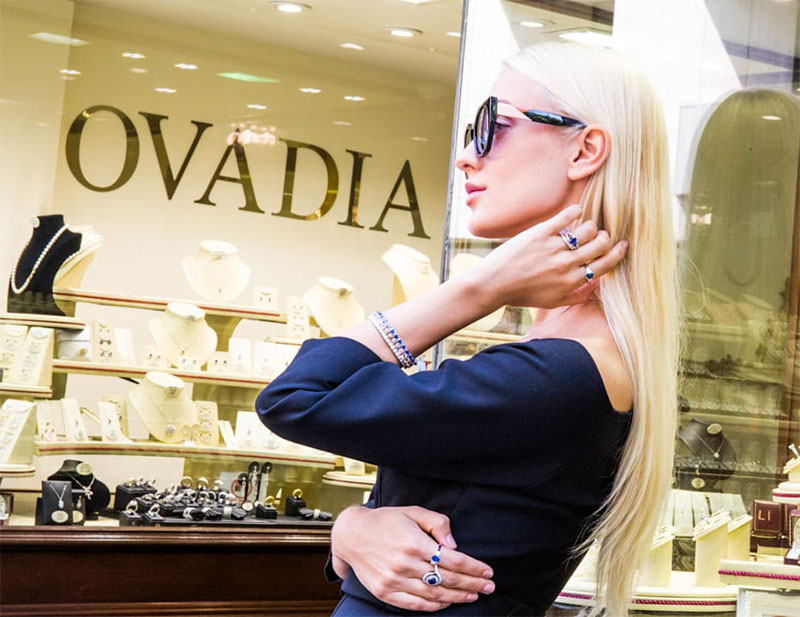
They say diamonds are a girl’s best friend. But man or woman, just how much do you know about diamonds? A current trend that is taking the world by storm is putting on jewelry made out of lab-grown diamonds. But does this mean traditional diamonds are to be forgotten?
Lab-grown diamonds look just the same as traditional diamond jewelry. In fact, they are so similar, experienced jewelers find it hard to tell the difference. Being an avid collector of jewelry makes all the difference that you know the type of diamond you’ve put on.
There’s a ton of misconstrued notions about traditional diamonds and lab-grown diamonds. So today, we debunk some of these myths by showing you the difference and giving you reasons why traditional diamond jewelry is better compared to lab-grown jewelry.
What is a Traditional Diamond?
A traditional diamond is a type of stone mined directly from the ground. It is grown by nature and takes many many years to form.
What is a lab-grown Diamond?
Lab-grown diamond is alternatively made using special machines and equipment inside a lab. A lab-grown diamond does not take as long to produce. But this doesn’t mean that it’s fake.
The structure and composition of both traditional and lab-grown diamonds are almost the same.

5 Reasons why you should Choose Traditional Diamond Jewellery over Lab-grown Jewellery
To the naked eye, a traditional, organic diamond looks exactly the same as a lab-generated diamond. Only an experienced gemologist can tell the two apart. And even then, it is still quite difficult to establish the difference. To be honest, the only difference between these two diamond varieties is where they come from and the value people give them.
However, there are other distinguishing factors that make traditional diamonds the better choice. Such factors include:
- Colour Variations
Traditional diamond exists in almost every color known to man. Its saturation levels, hues, and tonality are infinite in number. This is caused by the presence of carbon, nitrogen molecules, and other impurities inside the diamond.
On the other hand, lab-grown diamonds are limited to yellow, blue, white, green, and pink colors.
If you’re looking for unique colored diamond pieces, you’re better off choosing traditional diamonds.
- Resale Value
A lot of work and effort goes into mining, cutting, and designing organic diamonds into what a client wants. Alternatively, it doesn’t take as much work to develop or process lab-grown diamonds. This explains why it costs up to 30 percent less to buy jewelry made out of lab-grown diamonds compared to traditional ones.
When it comes to resale value, the same factors apply. Which in the long run means that organic diamonds have a higher resale value than lab-grown diamonds.
If you suspect that you may want to resell your jewelry in the future, it is better to purchase traditional diamonds.
- Rough Shape
Diamonds, whether traditional or lab-grown come in three main shapes. They are either cube-shaped, cuboctahedron, or octahedron. When you want to be processed, polished, and well-cut diamond jewelry, then its original shape doesn’t matter. But when you want to put on rough-shaped diamonds just as they came, shape matters.
Lab-produced diamonds have precise shapes and edges that are easy to point. Traditional diamonds have rough, untidy edges that indicate their true authenticity.
- Support Younger Economies
Some of the purest, rarest, and largest rough and uncut diamond pieces have been discovered in countries whose economies are still in the early stages of development.
Lab-grown diamonds, on the other hand, support already established economies while at the same time taking the financial support away from young economies where traditional diamonds are sourced from.
To show your support, it is better to buy such organic diamond pieces as opposed to lab-grown diamonds. It keeps people in jobs and helps eradicate poverty. It immensely benefits these countries.
- Status and Class
Everyone wants to know that they have a one-of-a-kind piece of jewelry that can’t be replicated by anyone else. This is a promise that each traditional diamond piece can guarantee. Traditional diamonds, however big or small have a story behind them. It comes with a rich sense of history having taken millions of years under pressure to develop. It is worn with pride, and it represents status and class.
Alternatively, lab-cut diamonds are produced in masses inside factories. They may look no different, but they lack the wow factor. Anyone who wears it knows that there’s nothing unique about wearing a lab-grown diamond.

Financial power and the need for a certain level of status in society are the main reasons why people love wearing diamond jewelry. Going by the five reasons above, you can better understand the difference between traditional diamonds and lab-grown diamonds.
Choosing traditional diamonds, therefore, comes as a no-brainer. It is up to you to establish what it is you’re looking for and decide whether you’re bold enough to go for it.
Before making your final decision, how about visiting an actual jewelry shop and get more information on these two diamond varieties? Hannah, a trained and experienced diamond expert and owner of Ovadia Jewellery, Hatton Garden Diamond Jewellers, is always happy to provide her advice as this topic is close to her heart. She is more of a traditionalist when it comes to diamonds and will confidently talk you through the benefits of purchasing a high-quality natural diamond as she always has some in the shop to look at.
Iskra Banović is our seasoned Editor-in-Chief at Blufashion. She has been steering the website’s content and editorial direction since 2018. With a rich background in fashion design, Iskra’s expertise spans across fashion, interior design, beauty, lifestyle, travel, and culture.





